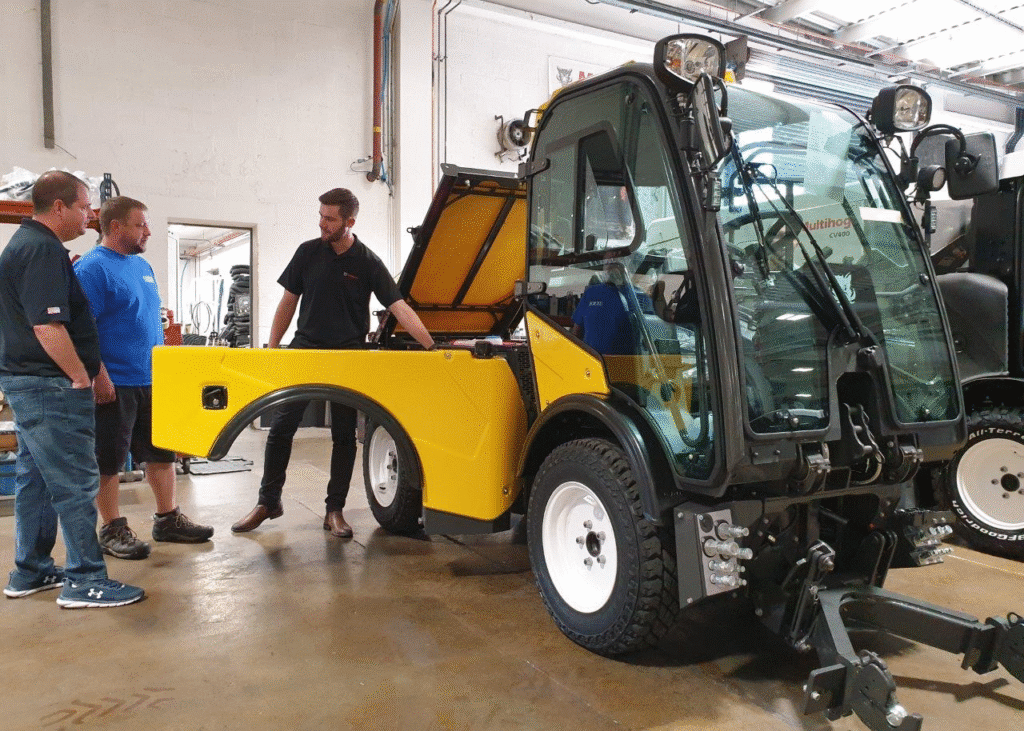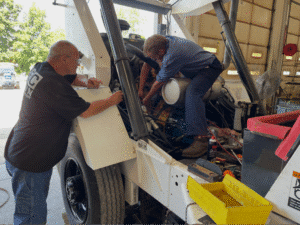Imagine your next major project running smoothly because you chose the optimal equipment strategy from the start. For municipal decision-makers and contractors in sewer, water, and wastewater management, roadway maintenance, snow and ice control, or landscaping, the method you use to acquire heavy equipment can significantly influence costs, resource allocation, and overall project success.
This article explores four key options—renting, buying, borrowing, and refurbishing—explained in clear, accessible language. With practical examples and actionable tips, you will be equipped to choose the approach that best fits your operational needs.
Renting Heavy Equipment: Flexible Solutions for Short-Term Needs
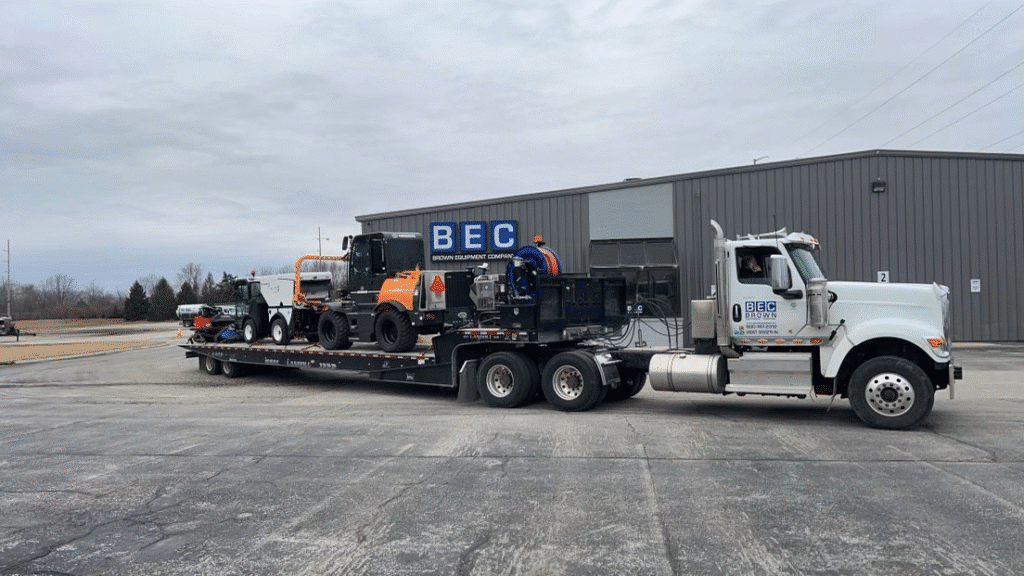
Renting heavy equipment is a cost-effective choice for projects that require specialized machinery for a limited time. This approach minimizes upfront investment while shifting maintenance and storage responsibilities to the rental provider.
Benefits of Renting
- Low upfront costs, avoiding large capital expenditures.
- Rental providers handle repairs and upkeep.
- Flexible for seasonal or short-term projects, such as snow removal or occasional tasks.
- Opportunities to test different equipment before committing to a purchase.
Drawbacks of Renting
- Rental fees can accumulate if equipment is used frequently.
- Limited customization may not meet all specialized requirements.
- High demand during peak seasons can affect equipment availability.
- Contracts might include hidden fees that add unexpected costs.
When Renting Is Ideal
Renting is best for projects with defined timelines or temporary equipment needs. It is also useful when you want to evaluate a machine’s performance before deciding on a purchase.
Quick Tips for Renting
Before finalizing a rental, read contracts carefully to identify any extra charges, choose providers known for well-maintained fleets, and ask if optional training is available for faster adoption of the equipment.
Transitioning from renting, it’s important to explore alternatives for long-term operations that may demand a different approach.
Buying Heavy Equipment: Investing in Long-Term Reliability
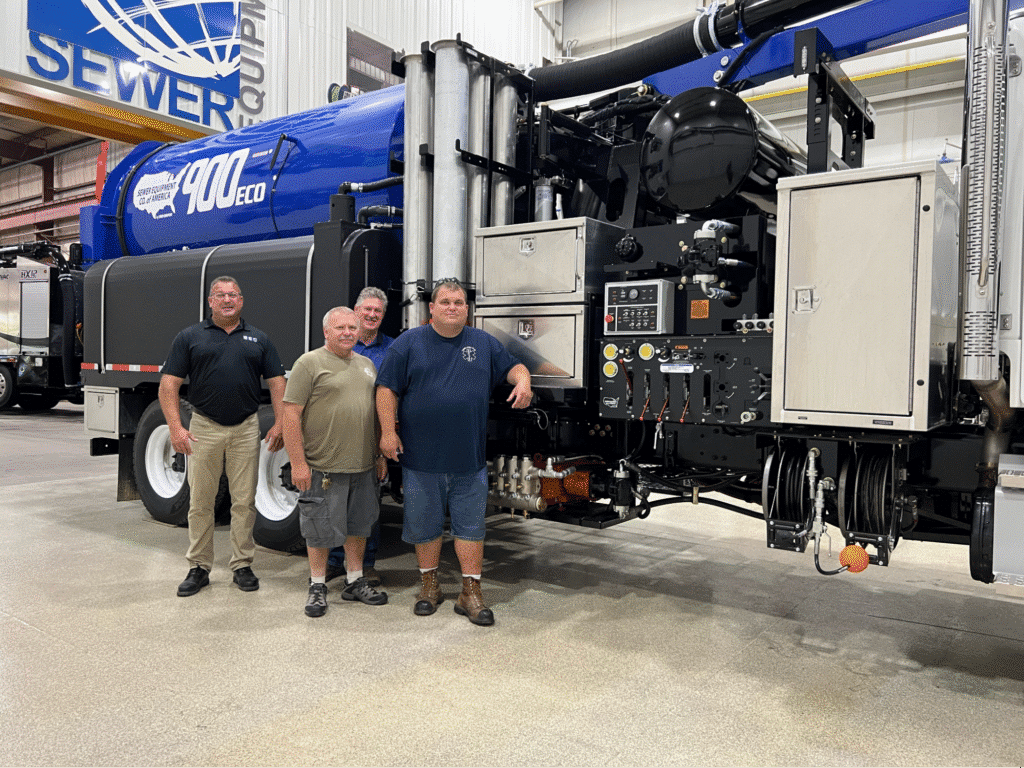
Purchasing heavy equipment works best for continuous, high-use operations where full control of the asset, customization, and immediate availability are priorities. While the initial cost is high, ownership can lead to substantial long-term savings.
Advantages of Buying
- Complete and uninterrupted ownership provides 24/7 access.
- Full control over equipment customization to suit specific project needs.
- Equipment builds long-term assets that may have resale value.
- Flexible maintenance scheduling to extend the equipment’s lifespan.
Challenges of Buying
- High initial expenditure and potential financing hurdles.
- Ongoing maintenance, storage, and depreciation can add to the total cost.
- Equipment may become outdated if technology advances.
- Underutilization risk if project demands fluctuate.
When Buying Is Best
Purchasing is preferable for year-round operations with predictable equipment demands and when customization is necessary to meet unique project requirements.
Practical Buying Advice
Before buying, calculate the total cost of ownership, including financing, maintenance, and depreciation. Explore various financing options to reduce the upfront burden, maintain a regular maintenance schedule to preserve value, and consider the equipment’s resale potential in your decision-making process.
Smoothly shifting focus from buying, another viable method involves sharing resources through equipment borrowing.
Borrowing Heavy Equipment: A Collaborative, Cost-Effective Alternative
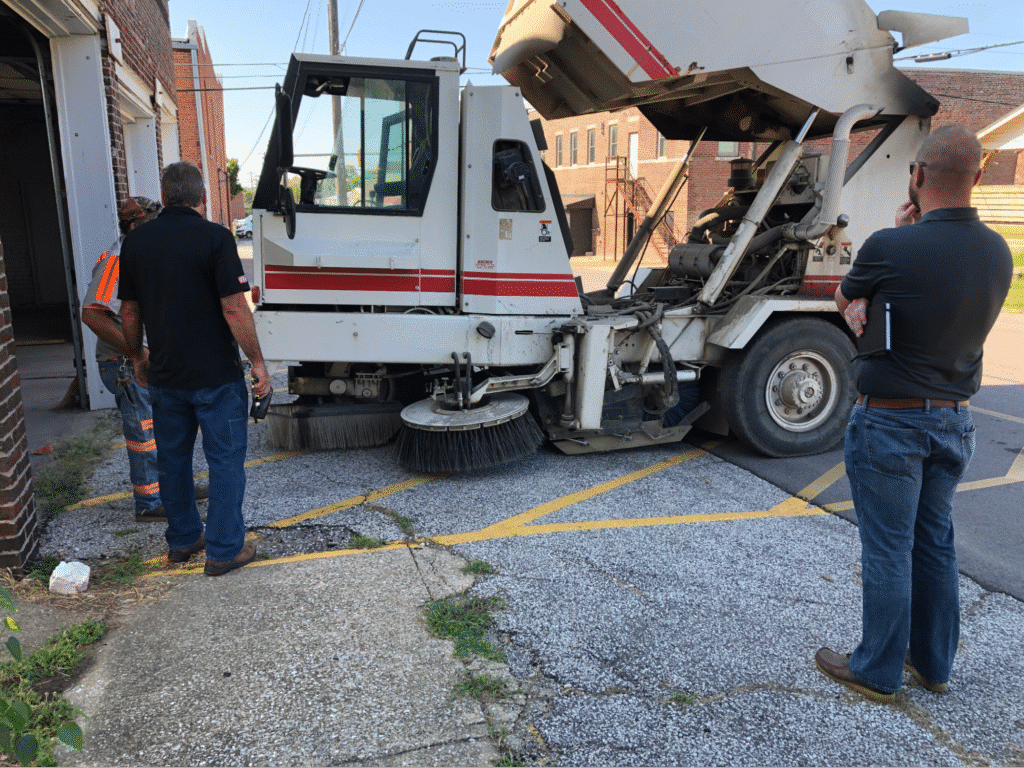
Borrowing equipment means sharing resources with trusted partners or neighboring businesses. This option can be highly cost-effective when equipment use is infrequent and not central to daily operations.
Benefits of Borrowing
- Minimal capital investment since you avoid large purchases.
- Strengthens industry relationships and encourages mutual support.
- Shared costs lower the financial risk for occasional use.
Considerations for Borrowing
- Equipment quality might vary, and machines may not be the latest models.
- Availability depends on the lender’s schedule; delays can affect project timelines.
- Always secure a written agreement that outlines responsibilities for damage, repairs, and insurance.
When Borrowing Is Ideal
Borrowing works well for one-off tasks or low-frequency projects where renting or buying would not be economically justifiable. It is most effective when you have established strong industry ties.
Best Practices for Borrowing
Ensure clear, formal agreements are in place, confirm that the borrowed equipment is adequately insured, and coordinate schedules well in advance to avoid delays.
As a final option, consider extending the life of your current assets through refurbishing heavy equipment.
Refurbishing Heavy Equipment: Extending Asset Life Responsibly
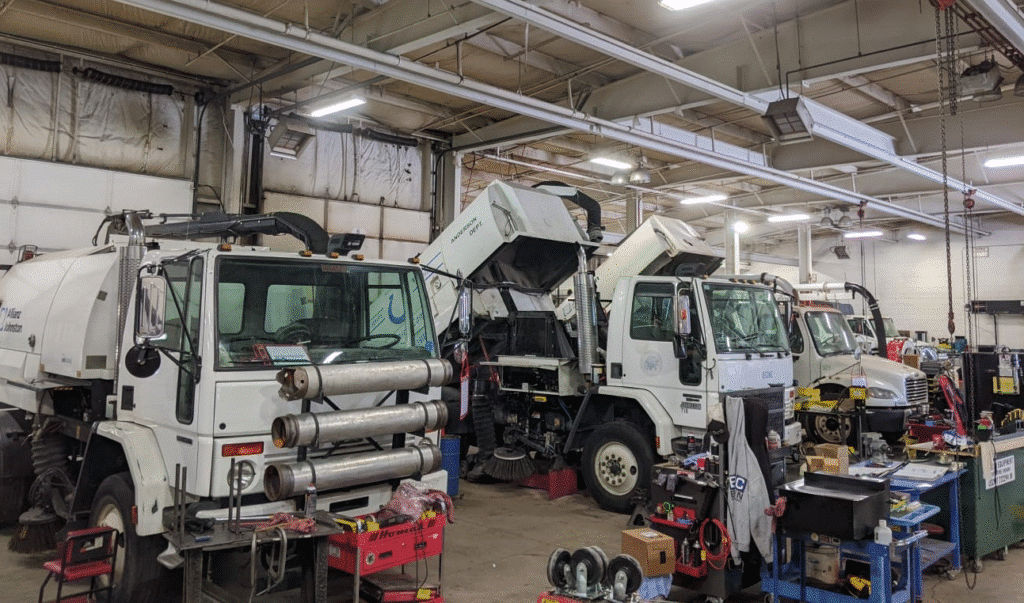
Refurbishing equipment involves upgrading and modernizing existing machinery to recondition, restore or enhance its performance. This sustainable option can be both cost-effective and environmentally responsible.
What Refurbishing Involves
- Replacing worn-out components and updating obsolete systems.
- Conducting deep maintenance, including cleaning, repainting, and testing.
- Integrating modern technology to boost operational efficiency.
Advantages of Refurbishing
- Generally less expensive than purchasing new equipment.
- Extends the service life of existing assets.
- Maintains operator familiarity, reducing the learning curve.
- Promotes sustainability by reducing waste through asset reuse.
Disadvantages of Refurbishing
- Equipment may be unavailable for a period during refurbishment.
- Not suitable if the machinery is too outdated to benefit from upgrades.
- Technical limitations may restrict the extent of possible enhancements.
When to Choose Refurbishing
Consider refurbishing when the basic machinery is sound but needs improvements, or when budget constraints make new purchases less attractive. This option works best when downtime can be scheduled during slower periods.
Best Practices for Refurbishing
Work with experienced reconditioning specialists, compare refurbishment costs against the benefits of enhanced performance, and plan the refurbishment schedule to minimize disruptions.
With the four core strategies explained, it is important to consider overarching factors that will guide your decision.
| Benefits | Drawbacks | Most Ideal For | |
| Rent | • Low upfront costs and no large capital expenditure. • Maintenance and repairs are handled by the rental provider. • Flexible for short-term, seasonal, or occasional projects. • Allows for testing equipment before a potential purchase. | • Accumulated fees can become expensive with frequent use. • Limited to no customization options. • Availability can be an issue during peak seasons. • Contracts may contain hidden fees. | • Projects with defined timelines or temporary equipment needs. • Evaluating a machine’s performance before buying. |
| Buy | • Full ownership provides 24/7 access and control. • Can be fully customized to meet specific project needs. • Builds long-term assets with potential resale value. • Complete control over the maintenance schedule. | • High initial cost and potential financing challenges. • Owner is responsible for all maintenance, storage, and depreciation costs. • Risk of technology becoming outdated. • Risk of underutilization if project demands fluctuate. | • Continuous, year-round operations with predictable equipment needs. • When specific customization is essential for projects. |
| Borrow | • Minimal to no capital investment required. • Strengthens industry relationships and mutual support. • Lowers financial risk for infrequent or one-off tasks. • Shared costs for occasional use. | • Equipment quality and age may be inconsistent. • Availability depends entirely on the lender’s schedule. • Requires a clear, formal agreement to define liability for damage and insurance. | • One-off tasks or low-frequency projects where other options are not economical. • Situations where strong, trusting industry partnerships already exist. |
| Refurbish | • More cost-effective than purchasing new equipment. • Extends the service life of existing assets. • Operators are already familiar with the equipment, reducing the learning curve. • Sustainable option that reduces waste. | • Equipment is unavailable (downtime) during the refurbishment process. • Not suitable for machinery that is excessively outdated. • The extent of upgrades may be limited by the original machine’s technology. | • When existing equipment is structurally sound but needs performance upgrades. • When budget constraints limit the purchase of new equipment. • When downtime can be scheduled during slow operational periods. |
Integrating Equipment Strategies: A Holistic Approach
Many contractors find that no single acquisition method fully meets their needs. A blended strategy—in which renting specialized equipment for short-term projects is combined with owning or refurbishing assets for regular operations—can optimize fleet management. This integrated approach minimizes financial risks while ensuring that the right equipment is available when required.
Key Considerations for Equipment Acquisition
When determining the best approach to acquiring heavy equipment, keep these factors in mind:
- Budget and Financial Constraints: Decide if you can manage high upfront costs or if lower initial spending methods like renting or borrowing are preferable.
- Project Scope and Frequency: Analyze whether your equipment needs are continuous, seasonal, or occasional. Continuous operations might favor buying, while short-term needs lend themselves to renting or borrowing.
- Equipment Specificity and Equipment Customization: Clarify if specialized machinery is required. Customization might favor buying or refurbishing; standard equipment often works well when rented or borrowed.
- Operational Management and Downtime: Consider whether you are prepared to manage maintenance and potential downtime actively. Renting and borrowing tend to reduce operational responsibilities.
- Scalability and Long-Term Goals: Evaluate your future growth plans. Rental solutions offer flexibility, whereas purchasing or refurbishing can provide long-term stability.
Industry-Specific Insights
Each industry has unique equipment demands that can affect which acquisition strategy is most appropriate.
Sewer, Water, and Wastewater Management
For applications like sewer cleaning trucks and pipeline inspection systems, consistent equipment availability is vital. In many cases, owning or refurbishing ensures readiness for continuous operations, while renting is effective for specialized tasks that occur less frequently.
Snow and Ice Management
Because snow and ice control is seasonal, renting or borrowing heavy equipment is often more practical during peak periods. However, owning essential machinery may offer the reliability needed during unexpected severe weather.
Landscaping and Vegetation Maintenance
For long-term landscaping projects, dedicated machinery ownership can enhance operational efficiency. In contrast, renting remains a strong alternative for smaller jobs or sporadic tasks.
Roadway and Highway Maintenance
Projects such as street sweeping and asphalt patching require equipment that is consistently available. Here, owning or refurbishing a fleet can secure long-term performance, while rentals add supplemental support when needed.
Brown Equipment Company: Comprehensive Equipment Solutions
Brown Equipment Company is recognized as a full-service dealership offering tailored equipment solutions for purchase and rent for various applications including sewer and water management, snow and ice control, roadway and highway maintenance, and landscaping. They provide equipment sales along with maintenance, repairs, and reconditioning services that aim to extend the effective life of machinery. The company also offers custom fabrication to meet specific project requirements.
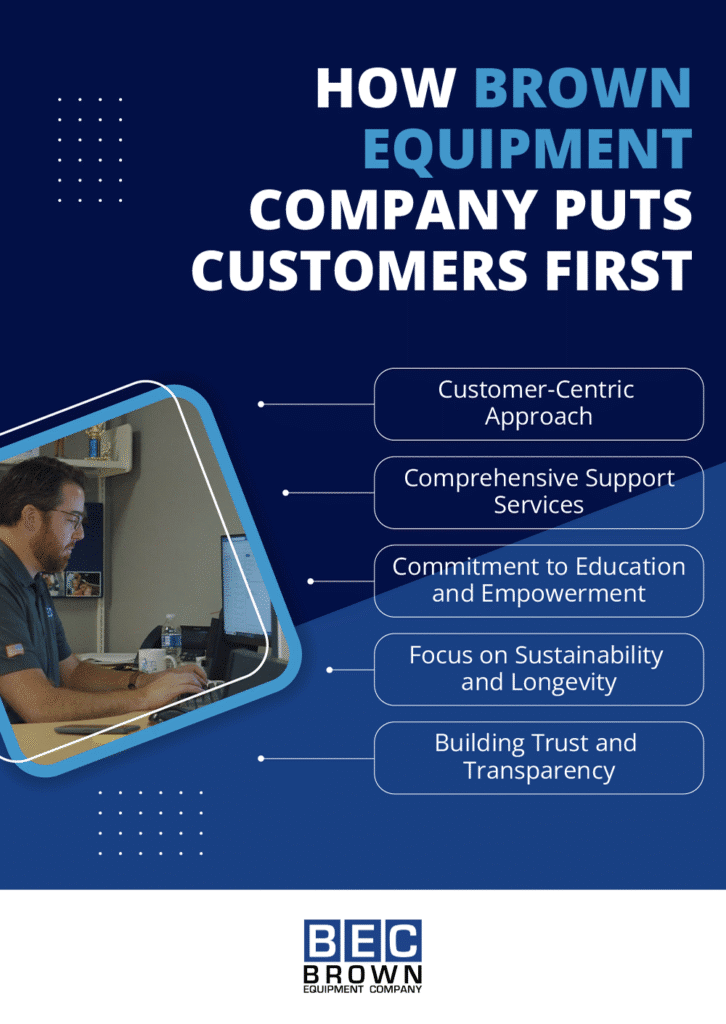
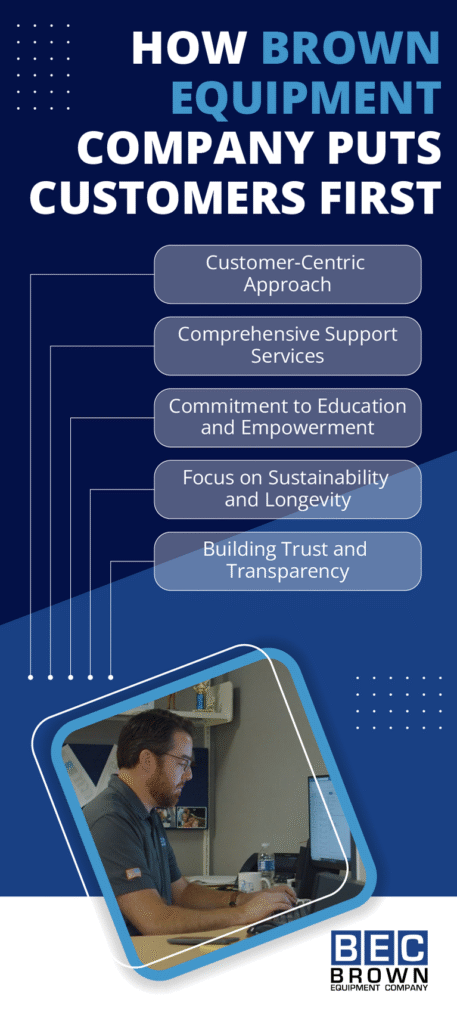
Brown Equipment Company demonstrates a customer-first philosophy that transcends mere sales quotas. They focus on understanding each customer’s unique project requirements to ensure that the selected equipment optimally enhances performance and efficiency. Instead of prioritizing sales figures, they aim to nurture long-term relationships through personalized guidance. Clients benefit not only from equipment sales but also from an array of tailored solutions including rentals, reconditioning, and custom fabrication that align with various operational demands. They provide thorough pre-purchase consultations, empowering customers to navigate complex equipment needs and make informed decisions.
Brown Equipment Company is committed to educating and empowering clients by offering training and resources for effective equipment use, ultimately promoting safety and maximizing value from investments. They further prioritize sustainability by offering refurbishment services to prolong the lifespan of machinery, aligning with clients’ environmental and financial goals. The company’s dedication to maintaining peak equipment performance is supported by robust maintenance and repair services. Through transparent communication and explicitly defined agreements, Brown Equipment Company builds trust and ensures that clients are fully aware of costs and obligations, free from hidden surprises, fostering confidence and satisfaction in every interaction.
Watch the video below for an insightful look into the heart of our service operations through a day in the life of a service tech.
Which Option is Best for Your Needs?
Choosing the right heavy equipment acquisition strategy—renting, buying, borrowing, or refurbishing—demands careful consideration of your project’s specific needs, budget constraints, and long-term goals. Renting offers flexibility and low upfront costs for short-term needs; buying provides control and reliability for continuous operations; borrowing is cost-effective for occasional tasks; and refurbishing extends the life of existing assets while promoting sustainability.
By understanding these factors and planning strategically—calculating the total cost of ownership and exploring various financing options—you can enhance efficiency and reduce costs across your projects. Develop an effective equipment acquisition strategy that best aligns with your operational goals.
For tailored advice on selecting the optimal equipment strategy for your unique needs, contact Brown Equipment Company today to explore your options or schedule a consultation.
